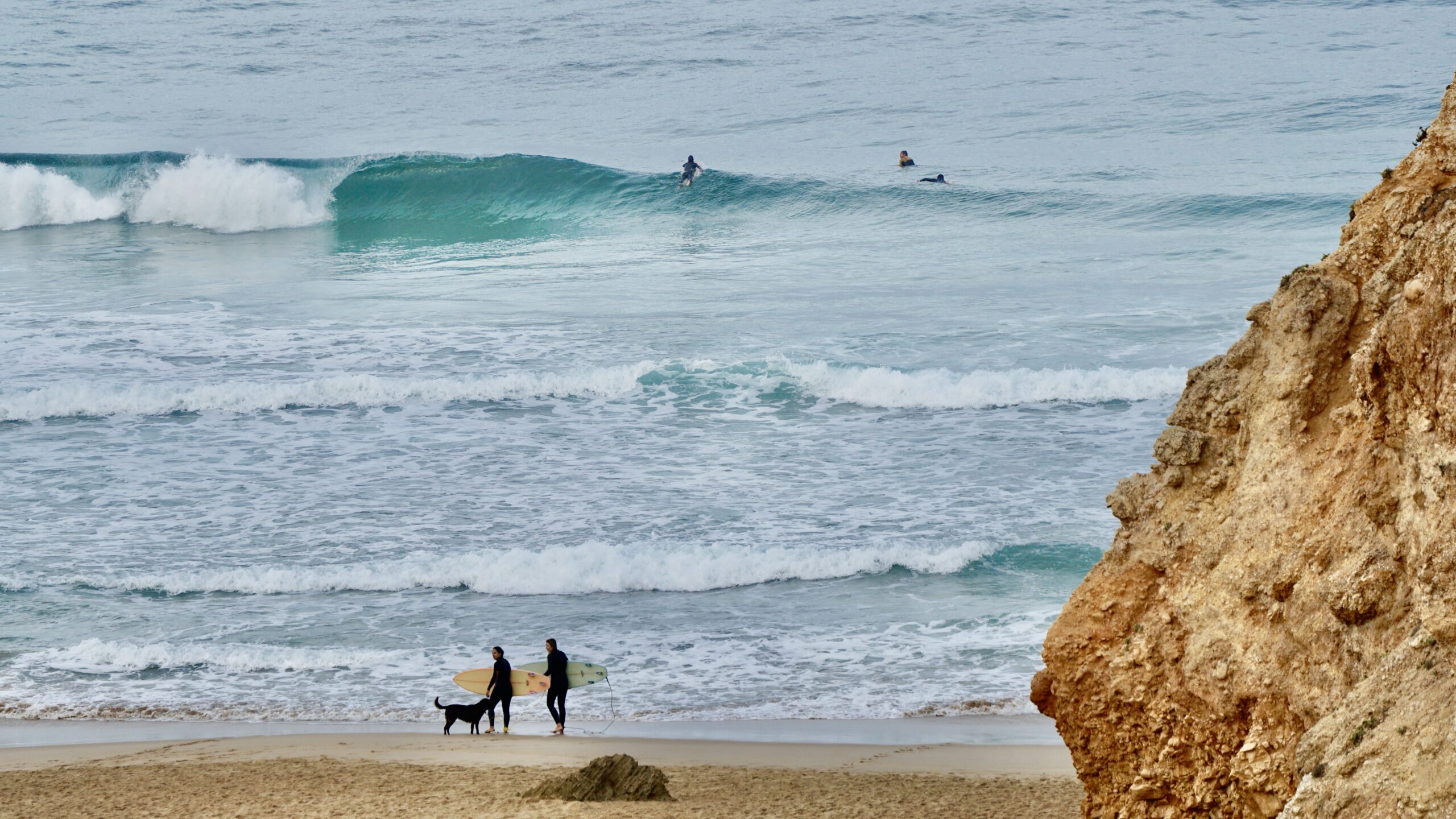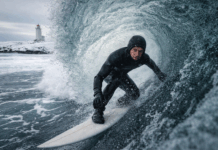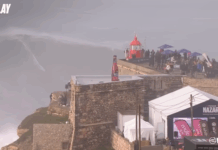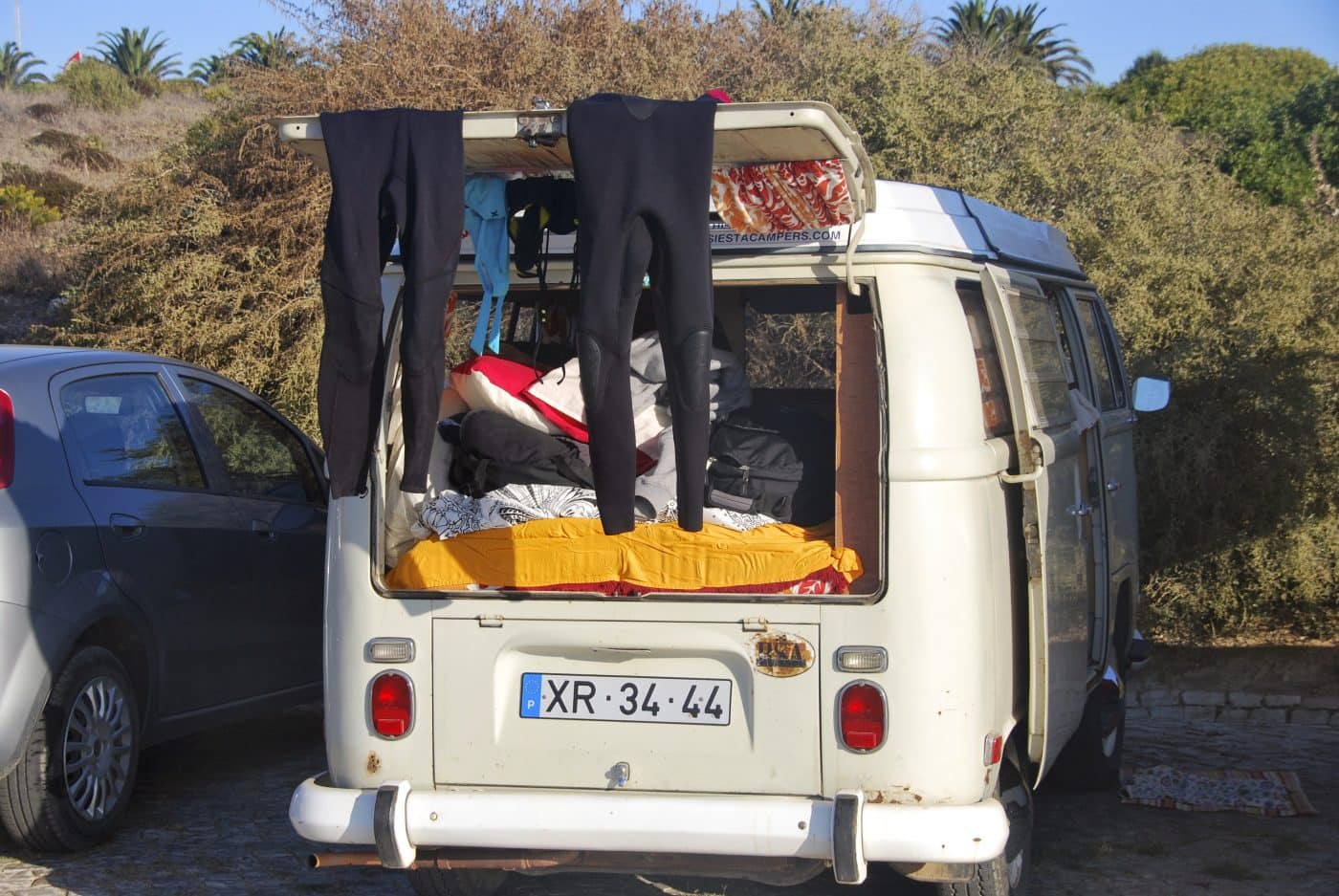Sometimes adventure is closer than you think. Just a few hours on a plane and you’re standing barefoot in warm sand, under a sun that feels more like spring than winter. The air is soft, the ocean smells salty, and mellow waves start to peel across the bay.
Welcome to the Algarve. Where winter means space, light, and friendly surf.
Why the Algarve in winter?
The Algarve has something special: two coastlines that perfectly balance each other.
On the west side, you’ll feel the raw pulse of Atlantic groundswell. On the south side, calm bays catch smaller, smoother waves. Together they offer one of Europe’s most reliable surf combinations — even when the rest of the continent turns cold and grey.
The vibe
Winter here feels unhurried. You park by the dunes, walk to the beach, and see a handful of surfers waiting for the next set. After your session, grab a bica in the sun or a plate of fresh fish on a terrace where the sand still clings to your feet. Life slows down, perfect for families, longboarders, or anyone escaping the noise.
Where to surf
Sagres makes the ideal base. Within twenty minutes, you can shift between two worlds:
- South Coast (Lagos–Sagres): Sheltered beaches with long, mellow lines. Ideal for longboards and families when the west gets too big or windy.
- West Coast (Costa Vicentina): Wide, wild beaches with more power and punch. On smaller days you’ll find playful, flowing rides that sharpen your technique.
Local classics to check: Mareta and Beliche on the south coast; Amado, Cordoama and Castelejo on the west.
Play with wind and tide, and you’ll almost always find a clean window somewhere.
Explore more on the Algarve surf guide.
Boards & wetsuits
In winter, most locals wear a 4/3 mm. On warmer days, 3/2 is fine.
Water stays around 16 °C, air often hits 18-20 °C+.
A longboard or midlength (6’8–7’6) suits the south coast best; for the west, go for something with a bit less volume.
Need help choosing your wetsuit? Check the wetsuit guide.
Tips for families & longboarders
- Go for sandy, spacious beaches: Try Bordeira, Beliche or the coves around Sagres.
- Book a local surf guide: They’ll read conditions fast and get you to the right spot. A real time-saver with kids.
- Keep it easy: One surf session per day is plenty. Add a cliff walk at Ponta da Piedade, an ice cream in Lagos, or a lazy swim at your stay.
Practical info
- Fly to: Faro (direct flights from most European cities).
- Getting around: A rental car is essential — without it, you’ll miss half the coast.
- Best time: November – March for steady swell, mild weather (but it can get stormy) and quiet beaches.
- When to surf: Mornings are usually cleanest. Always keep a plan B or C for different wind or swell angles.
Why you’ll love it
The Algarve isn’t about chasing big waves — it’s about finding flow. Long rides, empty line-ups and that feeling of having outsmarted winter. You’ll head home sun-kissed, salt-haired, and already planning to come back next year.
Frequently asked questions
Is the Algarve good for beginners in winter?
Yes. By switching between the south and west coasts, you can always find smaller, manageable surf.
A day of lessons or local guiding helps with timing, safety, and choosing the right spot.
What if the west coast gets too big?
Head south toward Lagos–Sagres. The coast there is more sheltered from wind and delivers long, mellow lines.
Which wetsuit should I bring?
Usually a 4/3 mm. On warmer days, 3/2 is enough.
If the wind picks up, boots are handy.
Check the Boardshortz wetsuit guide for more details.











